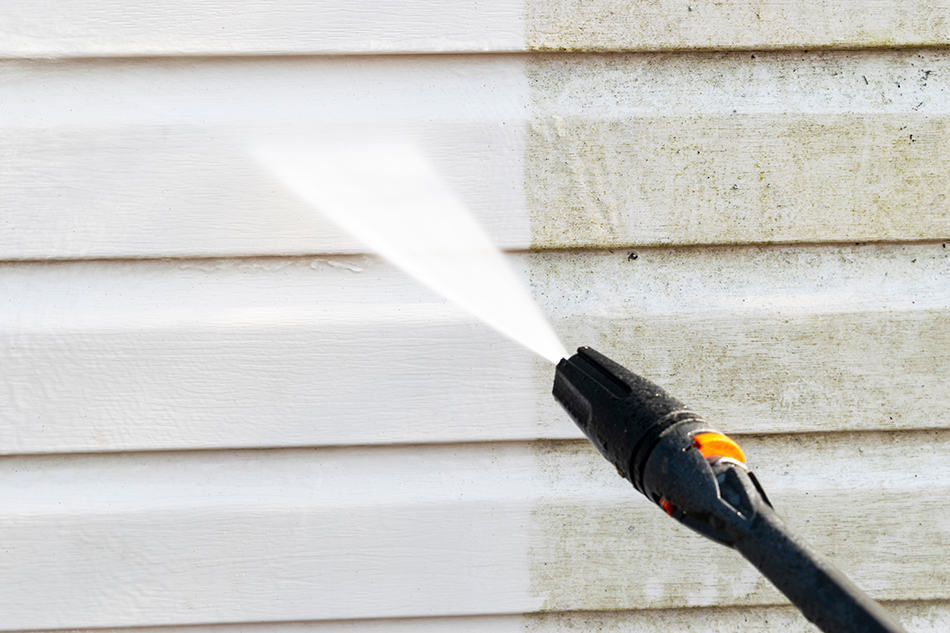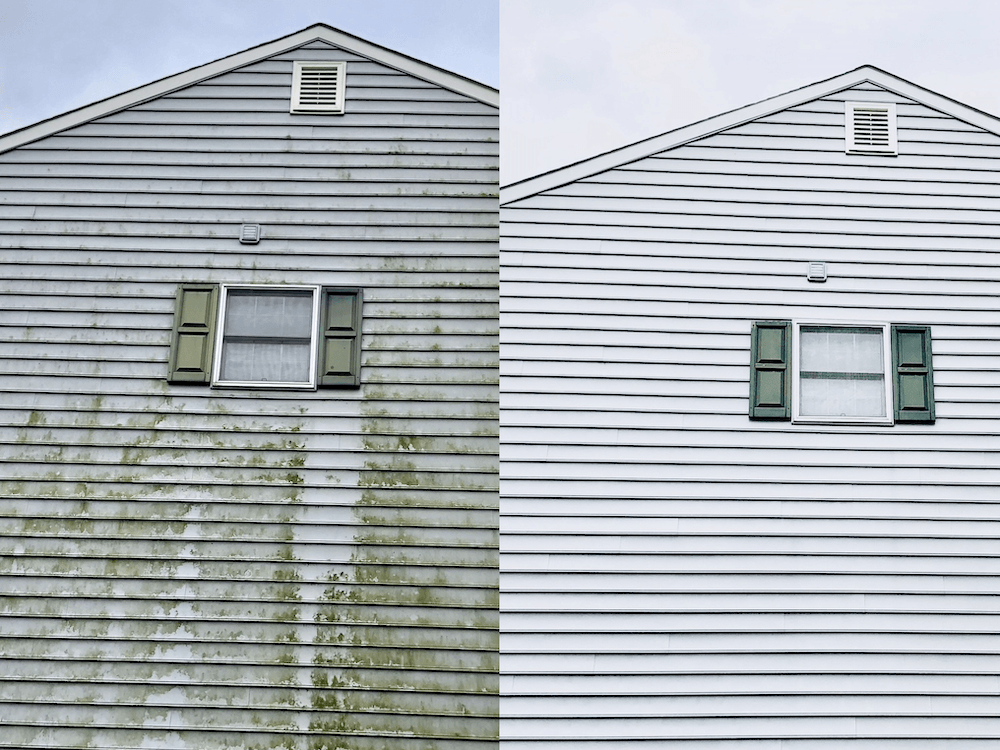Tips for Power Washing Your Home
Table Of Content
Scaffolding provides a stable platform, allowing you to reach high areas without the risk. Pressure washers come in both gas- and electric-powered models. Since you want to treat your siding gently, you won't need a high-powered gas washer; an electric one will suffice. Snap a picture of an item you like and we'll show you similar products. Protect shrubbery, plants, gardens, and lawn by covering with drop cloths or plastic sheeting. Close windows and doors, and duct tape or cover with plastic sheeting if your doors and windows are prone to leaking Secure all sheeting/cloths with duct tape.
Spray With Cleaning Solution
The Simple Trick For Transforming Your Hose Into A Pressure Washer - House Digest
The Simple Trick For Transforming Your Hose Into A Pressure Washer.
Posted: Wed, 21 Jun 2023 07:00:00 GMT [source]
The good news is that water, generally, is fairly cheap, as in less than a penny a gallon. There are a number of variables, but assuming you use about 250 gallons of water to pressure wash your house, that would be somewhere around $1.25 worth of water. James K. Willcox leads Consumer Reports’ coverage of TVs, streaming media services and devices, broadband internet service, and the digital divide.
Should I Seal My Driveway After Pressure Washing?
Avoid damage by starting on the lowest setting, slowly adjusting the pressure on the power washer, and making sure there’s sufficient distance between you and the surface you’re cleaning. If the danger to the user isn’t enough, there’s also a huge potential for damage to the surfaces being washed and their surrounds. Using a pressure washer on softer surfaces requires knowing the correct pressure, the correct nozzle, and the correct angle to avoid irreversibly damaging the surface.

STEP 1: Cover surrounding greenery and seal doors and windows.
Even old siding can be freshened up with a good pressure wash, and compared with the cost of new siding, the cost of pressure washing is a bargain. In general, it’s preferable and less costly to pressure wash a house during the warmer months of the year. Renting a pressure washer from a home improvement center or a tool rental retailer will cost anywhere from $40 to $100 a day. The costs to purchase one will depend on the type you buy—an electric one costs around $100 to $400, whereas a gas pressure washer will cost $300 to $600. Electric pressure washers work really well for smaller jobs and have the benefit of being highly portable. Here’s a guide to some of the best electric pressure washers.
STEP 7: Repeat Steps 4 through 6 until you’ve washed the whole house.
Best Pressure Washers of 2024: Expert Picked U.S. News - U.S. News & World Report
Best Pressure Washers of 2024: Expert Picked U.S. News.
Posted: Wed, 31 Jan 2024 16:26:19 GMT [source]
See the pricing below for purchasing or renting the one you need. Cleaning concrete curbs costs $0.25 to $0.60 per linear foot because it requires more fine-tune cleaning with a turbo nozzle. Most professionals suggest once a year, but that can depend on your location, how many trees surround the home, the weather, and the surface material.
Understanding and following safety guidelines can prevent accidents and ensure a smooth cleaning experience. If you’re planning to buy a pressure washer, talk to experts at your local hardware store. If you’re renting, the rental agency can provide valuable advice on which machine and settings are best for your home. Using too high a PSI can harm your home’s exterior, stripping paint or damaging siding. If you’re unsure, it’s always safer to start lower and increase the pressure gradually.

Average House Pressure Washing Prices
With the right equipment, pressure washing can be a satisfying and productive experience. If you think your home might have a lead-based paint, Macfarlane recommends buying a test kit or working hiring a professional for an inspection. In short, yes, you should pressure wash a house before painting it. Even if the exterior appears to be clean, it is almost certainly quite dirty, and paint will not adhere well to a dirty surface.
Holding the sprayer 2 to 3 feet from the surface, test rinse a small area to see what distance works best. But if you still see spots, move a bit closer and see if the cleaning power is right without causing any damage. If the reduced distance still doesn’t work, move closer in increments of 4 to 6 inches. So, investing in one is a good idea if you plan to use it regularly – and you should.
Using a pressure washer to remove paint definitely beats the old garden hose, scrub brush and TSP cleaning method, a task so slow that many people just skip it. Power washing a house costs $170 to $360, while pressure washing a deck or driveway ranges from $100 to $260. The average cost for power washing is $0.35 to $0.77 per square foot, and your total price will depend on the size of the job. Once you see the almost magical cleaning that a pressure washer can conjure, chances are you’ll start looking around to see what else could be cleaned with this method. Patios, decks, driveways, fences, lawn furniture, and children’s play structures can benefit from the forceful flow of water. Flat surfaces such as walkways and garage floors can be cleaned with a surface cleaner attachment that seems to melt away grime.
You can use pressure-washing equipment on most types of housing material once you learn how to pressure wash a house. Keep in mind there are some areas you'll want to avoid when power washing your house. "Regardless of the type of exterior you're cleaning, avoid getting detergent or water behind the outer surface," Macfarlane explains. Both power washers and pressure washers use strong streams of high-pressure water to clean surfaces, but power washing has the added element of hot water instead of cold. Soft washing is another type of cleaning that uses eco-friendly cleaning products and water at low pressure. If you use too much pressure while power washing, you could punch a hole in vinyl siding, etch concrete, or splinter wood.
For mold or mildew, use lower pressure and coat the surface in suds first. Almost all power-washing jobs require the help of a detergent or chemical cleanser. Begin your exterior cleaning project by spraying the area with an appropriate, environmentally safe detergent that can break up dirt and kill mold.
For delicate stucco, it’s also best to use a 25- to 30-degree wider spray nozzle to disperse water over a wider area and with less force, preventing any gouging or nicking. When power washing vinyl siding or other rugged, unpainted materials like brick, stone, and steel, it’s recommended to use a machine rated for 2,500 to 3,000 psi. Pressure washing fiber cement siding is not recommended and may void the siding’s warranty. If you opt to pressure wash this kind of siding, be sure to use less than 1,500 psi—and a wide nozzle.
Pressure washers save a lot of water over using a regular garden hose and get the house much cleaner, which is a plus. Many pressure washers aimed at this market aren’t designed to last long, especially under heavy use, so it’s a significant up-front expense that may not pay out over the years. Pressure washers generate a high-pressure water spray that’s ideal for cleaning boats, sidewalks, decks, and houses. Their power is measured in pounds per square inch (psi), which is the amount of pressure the liquid contents put on the walls of the container.
You may need a helper and a truck to get the pressure washer home. Plenty of people use a pressure washer to clean their car, but it can do more harm than good. Using a pressure washer can damage or nick the paint, which could lead to rust. A car wash will usually get the job done—so will a garden hose and soapy sponge. Use a little elbow grease and a specialized wheel cleaner on the wheels and other problem spots. Pressure washing prices per square foot range from $0.35 to $0.77 with most companies charging $0.40 per square foot on average.
Delicate materials such as wood, stucco, or aluminum siding must be washed at a lower pressure, which can take longer to remove built-up dirt and grease, and therefore will incur more labor cost. Vinyl siding and stone or brick material can be washed on a higher pressure setting and will therefore cost less. Depending on your home’s exterior finish, pressure washing can be a great solution to those looking to make sure their house is clear of dirt, grime and mildew. The question is, how much does making your home exterior look brand new really cost?
Comments
Post a Comment